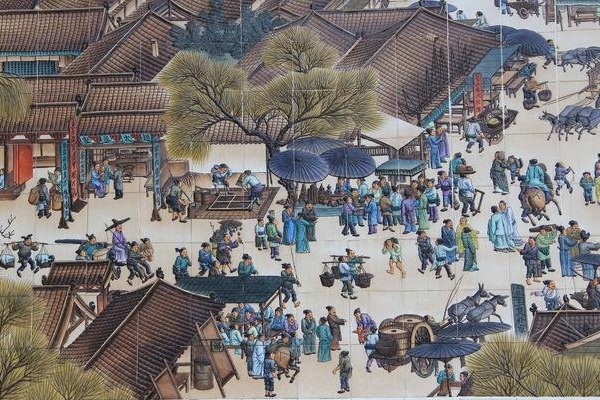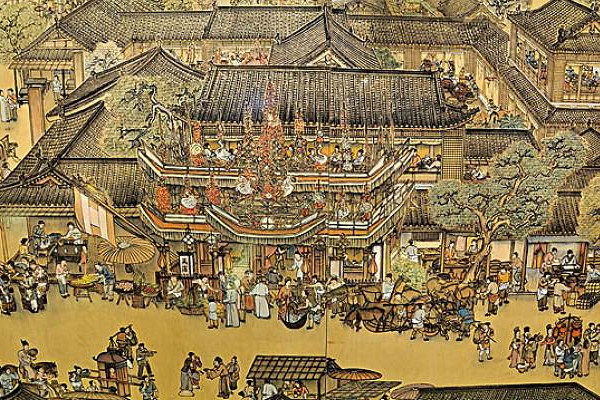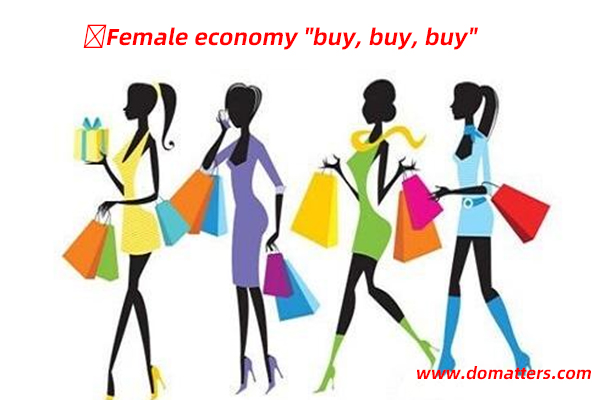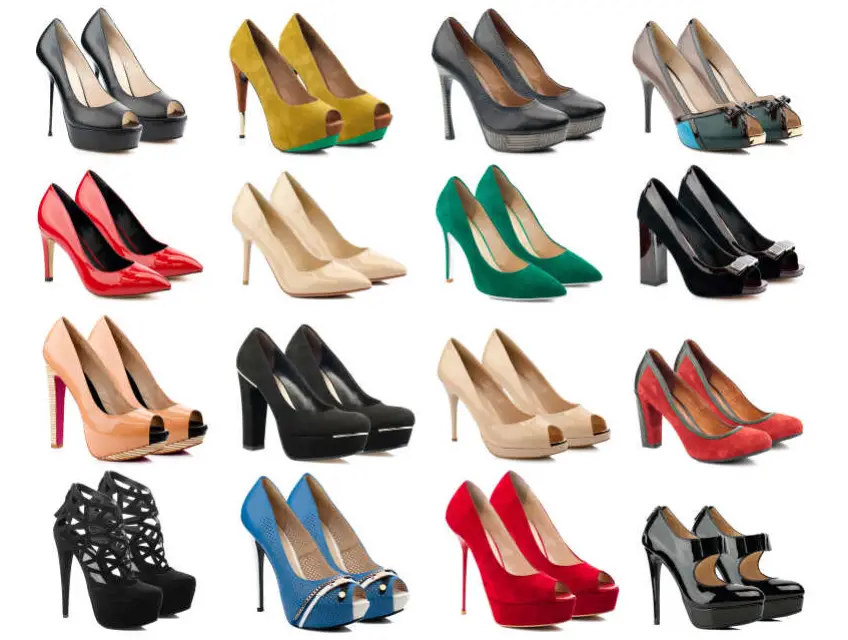Since June 1 this year, shopaholic has gradually “conquered” Tmall, jingdong, suning and other e-commerce platforms. It is no exaggeration to say “conquered”.According to monitoring data, during the “618” period, by the first hour of June 18, Tmall turnover reached last year’s 618 all-day performance, more than 110 brands sold more than 100 million, the highest increase of more than 40 times!The total turnover of jingdong reached 2015 billion yuan, and the turnover of beauty makeup and skin care increased by 412% year-on-year!Pinduoduo orders exceeded 1.1 billion, and GMV increased by more than 300% year-on-year!
No one would have guessed that when 618 was first officially launched in 2010, jd was proud of being “the first online retailer in China with sales of more than 10 billion yuan”.In nine years, jingdong completed the 618 shopping festival and exceeded the total sales volume of that year by 20 times, and the “shopping festival” created by various e-commerce platforms was in addition to the traditional festival, creating a business myth after another that was realized by encouraging the whole nation to buy and buy.
But why do consumers have to cut their hands off?Why can’t we hide from the platform and merchants’ “sugar coated shells”?Domatters takes you to analyze together, hoping to be helpful to you.
Trace the history of “shopping”
Of current shopping section “buy buy buy” admittedly crazy, but you perhaps do not know, human history on ancient times already had shopping section “buy buy buy” habit.
1. Is “buy buy buy” in Chinese social genes?


In ancient China, due to inconvenient transportation and feudal society’s policy of “emphasizing agriculture and suppressing commerce”, the commercial economy was not very developed. Therefore, people could only buy things on traditional festivals or at a fixed time each month.However, these “shopping festivals”, which are allowed to be freely traded, are mainly traditional festivals, such as Spring Festival, Lantern Festival, the tomb-sweeping day, hungry ghost festival, qixi festival and so on.In ancient China, the special place for “buy buy buy” was “shi”, which means market (similar meanings include “ji”, “field”, “town”, “street”, etc.)
The earliest organized markets in China date back to primitive times.In the western han dynasty, the night market in the prosperous tang dynasty, the grass market in the wei, jin and southern and northern dynasties and so on, the legend of “buy buy buy” of the Chinese people is spread.And in the crazy “buy buy buy” on this point, the ancient Chinese buying enthusiasm, no less than today’s us.In order to get to the morning market, vendors and buyers living far away from the market often get up in the middle of the night to go on the road, so as to buy the goods they want early.The ancient people’s “buy buy buy” also has its own characteristics according to the different seasons: in the Spring Festival market shopping,in the Lantern Festival to buy porcelain,in the tomb-sweeping day to buy kites,in the hungry ghost festival to buy sacrifices,in the qixi festival to buy fruits and vegetables gadgets ect.
When it comes to sales promotion, Wang xizhi, the sage of the book, is said to have helped an old woman who had a slow sale of bamboo fans to write an inscription on the fan, giving full play to the effect of “celebrities bring goods”.We stay up all night and snap it up early.The colorful pictures of the Lantern Festival in shangyuan and mulan poems depicting the lively scene of the Lantern Festival market in the Ming dynasty depict “buying steeds in the east market and saddles in the west market”.
Therefore, the “buy buy buy” gene of Chinese is rooted in the social history of China thousands of years ago.
2.Black Friday is the craziest in foreign countries
Shopping festival in ancient China is all concentrated on traditional festivals, while people in western countries like the United States, who are used to “big shopping”, begin to stock up on black Friday before Christmas.


Since Thanksgiving Day is celebrated on the fourth Thursday of November in the United States, the opening day after Thanksgiving, which is Friday, is the first day Americans start shopping for the following Christmas.As for why is “black”, a more common view is: supermarkets generally use different colors of ink bookkeeping, red means loss, and black means profit, and super shopping section “black Friday”, is everyone crazy to grab goods, merchants to make a lot of money day.
On black Friday, every major shopping mall in the United States will offer amazing discounts. From the moment when the supermarket opens, a huge number of customers will rush in crazily. There have been several large-scale stampedes in history.
On black Friday, 2008, a 34-year-old WalMart employee in valley creek was trampled to death by thousands of shoppers as she opened her store at 5 a.m.
In the middle of the night of black Friday 2011, a 61-year-old customer at shopping, a target store in West Virginia, suddenly collapsed.
3.Artificial holidays: the pitfall of consumerism
In recent years, “black Friday” in the western countries to develop at the same time, the world also emerged a variety of artificial shopping festival.For example, “double 11” and “double 12” set by alibaba, “618” launched by jd, “818” shopping festival launched by suning tesco, “super Saturday” derived from “black Friday”, “cyber Monday” and so on.
Faced with the consumerist slogans and the consumerist culture behind “lipstick free”, “cherry free” and “bag free”, it is undeniable that stimulating consumer demand can stimulate economic growth to some extent.
But do we really have that much demand?If we don’t meet these needs, will our quality of life change radically?In this consumerist shopping wave, do we really become more free or have been kidnapped by the merchants marketing conspiracy?
What makes Chinese consumers ‘chop their hands off’ in shopping day?
1. Improvement of consumption environment and technological progress provide convenience for shopping
The boom of shopping festival in China is taking advantage of the development of mobile Internet technology and the rise of e-commerce, and then riding on the policy of “boosting domestic demand” to catch the rising female economy and play one set of combination CARDS after another.
l E-commerce platform builds up the consumption kingdom of shopping section

The rapid development of Chinese e-commerce in just two decades has laid a platform for shopping festivals, and the shopping festivals relying on major e-commerce platforms are feeding back the platform at an amazing speed.
In 1998, the first online order appeared in China.
In 2008, e-commerce accounted for more than 40% of the total retail sales of consumer goods in China.
In 2009, the transaction amount of alibaba’s first “singles’ day” reached 50 million yuan.
In 2018, the online sales volume reached 314.3 billion yuan.
By December 2018, the number of online shopping users in China had reached 610 million, with more than 1.3 people per family using shopping.In the first five months of 2019, the total amount of online retail in China reached 3,864.1 billion yuan.
In this rapid development trend, the pattern of Internet e-commerce is also evolving:
At first, traditional e-commerce represented by taobao and JD rose rapidly and occupied the mass market, especially the first and second-tier cities.In the past two years, the rise of social e-commerce represented by pinduoduo targeted the sinking market;Recently, the member e-commerce represented by the cluster has stepped out of a “circle user” mode based on the social relationship chain and focused on “her economy”.And the major e-commerce platforms are competing for traffic dividends in a variety of ways: full reduction, coupons, flash sales, group…In the shopping section of the price war, there has never been a lack of new ways to play.A large number of e-commerce enterprises are in the rapid iteration of marketing strategy, changing the way constantly steal money from consumers.
Compared with macro data, for individuals, the rise of e-commerce means a huge change in shopping mode.We no longer have to wait for supermarket promotions, market discounts, and offline consumption. With the touch of a mobile phone screen, products from all over the world can be delivered to us.
When e-commerce becomes a way of life and shopping becomes a truly ritualistic shopping day, consumption has become simpler and simpler.
l Mobile Internet technology enables shopping network to provide the most basic support for e-commerce platform
Mobile Internet is an emerging business that obtains services and services through intelligent mobile terminals and USES mobile wireless communication. The opening of 5G era and the upgrading of mobile terminal devices will certainly inject great energy into its development.In short, for online shopping, mobile Internet technology enables us to break down the barriers of time and space and consume anytime and anywhere through mobile phones, computers and other terminals
.
According to the 42nd statistical report on the development of China’s Internet network released by China Internet network information center (CNNIC), China’s Internet users reached 829 million by December 2018, among which the scale of shopping users was as high as 610 million.
Under the power of mobile Internet technology, shopping network not only becomes more and more convenient, but also gradually becomes a daily habit of the public.And the great power of habit has been demonstrated by the amazing statistics of shopping.

l Good e-commerce policy to release the potential of consumption
After the promulgation of China’s first e-commerce law in 2018, many favorable policies for e-commerce have been issued successively. At the executive meeting of the state council, the state council decided to continue to improve the scope of cross-border e-commerce retail import policy, reduce the import tariff rate of 1,585 industrial products, and set up a number of new comprehensive pilot zones for cross-border e-commerce.Taking advantage of this wave of “official announcement” and promoting people’s enthusiasm to buy things through shopping festival is the embodiment of “releasing residents’ consumption potential”, which in turn can stimulate economic development.
l The rising female economy helps “buy, buy, buy”
Who is the main force paying for shopping?

In 2018 618 shopping section, nearly half of female consumers pay close attention to promotional activities (” 2018 China “618 e-commerce shopping section hot spot monitoring report”)
In 2018, the number of fashionable women aged 25 to 40 in China has reached 290 million, and nearly 75 percent of household consumption decisions are dominated by women.Women’s market is expected to reach 4.5 trillion yuan
in 2019 (guotai junan research daily)
Women account for 70% of alibaba’s online e-commerce sales.(policy research office of alibaba group)
It’s not hard to conclude that behind the amazing Numbers in shopping is the gradual rise of the female economy.With the continuous independence of women and the gradual improvement of consumption power, women are playing an increasingly important role in the social and economic development of women.Alibaba founder jack ma once mentioned at the first global women entrepreneurs conference that “women” is one of the three factors of alibaba’s fast growth.Although the shopping boom has now faded and more consumers tend to be rational, the rapidly emerging female economy has become an important driver to boost the tide of shopping festival.
2. Merchants create festival ceremonies to promote consumption enthusiasm
From 2009 to 2018, taobao’s “singles’ day” trading volume has achieved a leap of 4,270 times. This year’s “618” sales volume even surpassed the whole day sales volume of 2018 on June 16, and achieved a remarkable achievement of more than 110 brands selling over 100 million yuan.Behind this, what means are used by businesses to make shopping section has such a great charm?
l Symbol construction: creating the myth of consumerism
Have you ever experienced this kind of shopping vicious cycle?Being planted on a whim and feeling that you might need to — buy — buy — put it in your house to eat — sell it secondhand/shelve it/throw it away — blame yourself for wasting money.In many shopping sections of the propaganda, consumer demand and desire are induced by businesses to expand.Scholars of Frankfurt school, marcuse has put forward the concept of “false needs” to reveal the essence of this phenomenon: “interests through various mass media, imposing their demand, encourage the expansion of the unreasonable desire and profit, and eventually lead to the satisfaction of people from the demand of the false false, a slave to the demand.”
Simply put, for example: diamond ring such things, in addition to their own, originally will not be endowed with more meaning, diamond ring is just a diamond ring.However, in shopping and various marketing activities, many brands will attach the meaning of “once in a lifetime”, “personal customization” and “eternal love” to a well-made ring, which forms the myth of consumerism.And consumers buy diamond ring, often out of the “eternal love” of this consumer myth.
If it is said that “creating myth” is the marketing technique and “line” strategy of merchants for a certain fixed category of goods, then the consumption festival ceremony created by merchants has a powerful influence of “surface”.
l Atmosphere building: from promotion to marketing consumption festival ceremony
The festival relies on special cultural symbol forms and fixed ceremonies, so as to gather groups and create carnival. E-commerce platforms are building artificial shopping festivals such as “double eleven” by following the traditional festival ritual ideas.Let’s take section 618 shopping, which originated from the celebration day of jingdong store, as an example.”June 18″ is a “time symbol” containing evoking power and brand memory. The promotional advertorials distributed in cyberspace and the promotional posters full of visual allure and stimulation are “space symbols”. “rain of red packets on the hour”, “killing the hour in a second”, “hot style falling down” and “collective hand chopping” are “ritual symbols”.All symbols will participate in the public groups through the spontaneous network and eventually build a complete system of holiday symbols and holiday behaviors.Similarly, as early as 2015, Tmall cooperated with hunan satellite TV to create a four-hour “singles’ day party” in an effort to create “ritualistic consumption”.When singles’ day becomes a holiday ritual, consumer behavior seems to be a rational choice.”Maimaimai” has become a direct way to participate in the ceremony, which caters to the intention of e-commerce platforms. It not only weakens the rational thinking of consumers by virtue of the festive atmosphere, but also strengthens the group’s identity to consumer culture through the festival ceremony.In this way, double 11, 618 and other festival symbols in the process of strengthening, eventually become a huge influence of the network shopping carnival.
l Payment technology minimizes the consumption process
After painstaking efforts to build shopping festival ceremony and adopt big wave marketing strategy, today’s e-commerce platforms are also ruthless, one-stop service to payment.Newly developed fingerprint payment, face scanning payment, allows you to brush off thousands of RMB in one second, but you don’t feel the pain of spending money.Before anyone knew it, the money had been paid!
3. Consumer psychology changes and purchase intention increases
However, in the face of the fierce attack of shopping section, consumers are not completely passive. As individuals with independent thinking, consumers still hold subjective will and attitude. So, what is it that dominates the main motivation of consumers to “buy buy buy”?
l Consumer are not buying goods, but symbols

In daily life, when we chat with our friends, we often say, “I think the clothes/shoes of XXX brand are quite good”, “the bag of xx brand is really expensive” and so on. In front of many emerging brands in the market, consumers have their own choices based on product performance, efficacy, price and other indicators.During last year’s double tenth, leading in the domestic vertical luxury electric dealer market temple library issued consumption data is that the generation after 90 s has become the backbone of luxury purchasing power, and by the ruder, according to the 2019 China luxury report released young millennials (26-35 years old), is becoming a global luxury consumption of the main groups.This means that the meaning of consumption is changing from the value of goods to the symbol of goods for young people.
For this phenomenon, French sociologist baudrillard once put forward the “symbol exchange” theory to examine: in the modern consumer society, “the value referred to” has been eliminated, when people buy a product, the most important thing is not its performance, efficacy, cost performance, but its brand, that is, the symbol.And what this symbol symbolizes is the division of social class.For example, wearing luxury goods can make people feel as if they have stepped into the middle class, and brand owners have launched their own positioning and slogan in succession to cater to consumers’ psychology of “obtaining symbols”.For example, Mercedes Benz’s advertising slogan, “leading The Times, driving the future”, has a very strong social elite color, so that buyers can obtain self-identification and symbol exchange.
There is no denying that “purchase significance” is indeed a way of “identity identification” of consumers, whose behavior has certain rationality.Of course, some consumers may not buy a brand for the purpose of “exchanging symbols”.But in the 618 of the war has not been dispersed, we must always remind ourselves not to be kidnapped by the meaning of the brand, forget the original intention of consumption.
l Psychology guide for consumer in “Buy buy buy”section
“Buy buy buy” is not a simple thing at all, such as some people buy symbols, some people just want to be happy.During shopping day, there are different reasons for “cutting hands” based on the complex and changeable consumer psychology.Some are based on conformity.Look at “your friend all have, you still don’t buy?””Advertising slogan, holding shopping anxiety, finally through the purchase to confirm that they belong to a group.Some are based on emotional catharsis.Just got paid?Must buy!Just broke up?Treat yourself. Buy!Being scolded by your boss recently?Comfort yourself, buy!…I don’t care what you are, buy buy buy!Some people are impulsive.”Wow!This is a bargain!””Fold that in half!”Here’s a present!”To buy is to earn!Buying something on sale is making money!Why not?
Some are based on reason.In the micro blog after a circle of “homework”, shop carefully after the preparation of panic buying plan, finally pull off a big wave of “wool”.
You can foresee, just in the past 618 this big wave of buy buy buy, under the blue sky, fragrance of the earth, and will become soft and delicious.But a lot of consumer express in abundance, although had eaten soil, but they are resolute without retrace, without complaint without regret — if arrive double eleven, 12-12, I buy again even!










